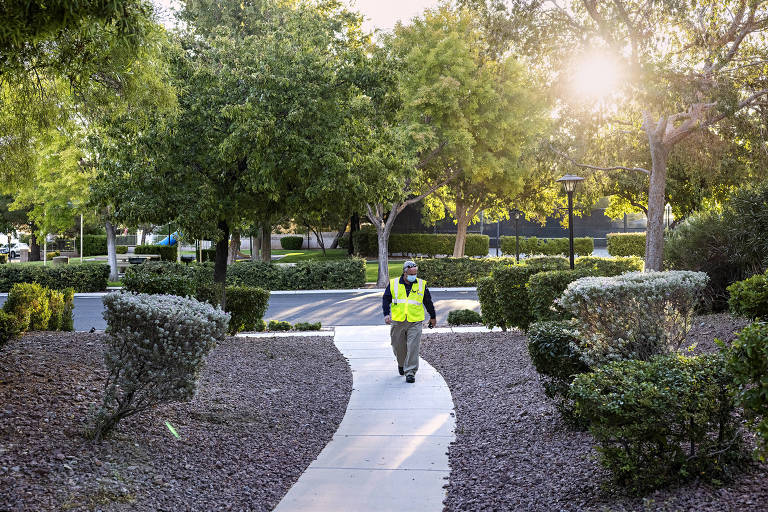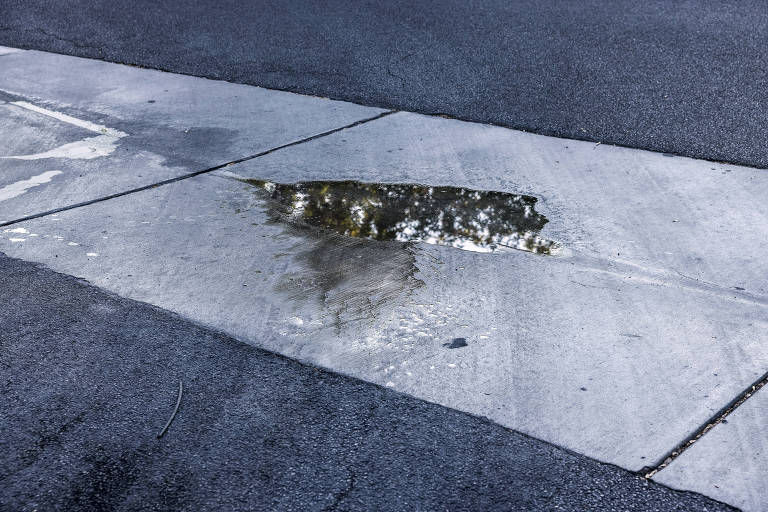The emptiness is impressive. Between Arizona and Nevada, mountains and dry land contrast with the clear desert sky, winding for miles where no one can be found.
There are, of course, exceptions, from an American Air Force base that tests drones for use in warfare to a small town of fewer than 300 people, where you can eat a great burger next to a junkyard of vintage cars.
Abandoning the country's core is not a new movement in the US. In recent decades, in search of jobs and better living conditions, Americans have left rural areas with small and medium-sized towns for big cities.
In 1950, 64% of the population lived in urban areas. Today, that number reaches 83% and, in 2050, it will be almost 90%. Migration within the US generally took place without taking into account the incidence of natural disasters. But that has changed.
Added to socioeconomic conditions, the climate crisis has become a major factor in the emptying of the American interior. A study published in 2018 by the Journal of the Association of Environmental and Resource Economists shows that, due to climate chaos, one in 12 people now living in the southern US will migrate to California or the mountainous regions of the west and northwest of the country over the next 45 years.
The scenario will likely further increase poverty and inequality, and reinforce the disorderly urbanization that burdens large cities, often leaving them unable to provide basic services.
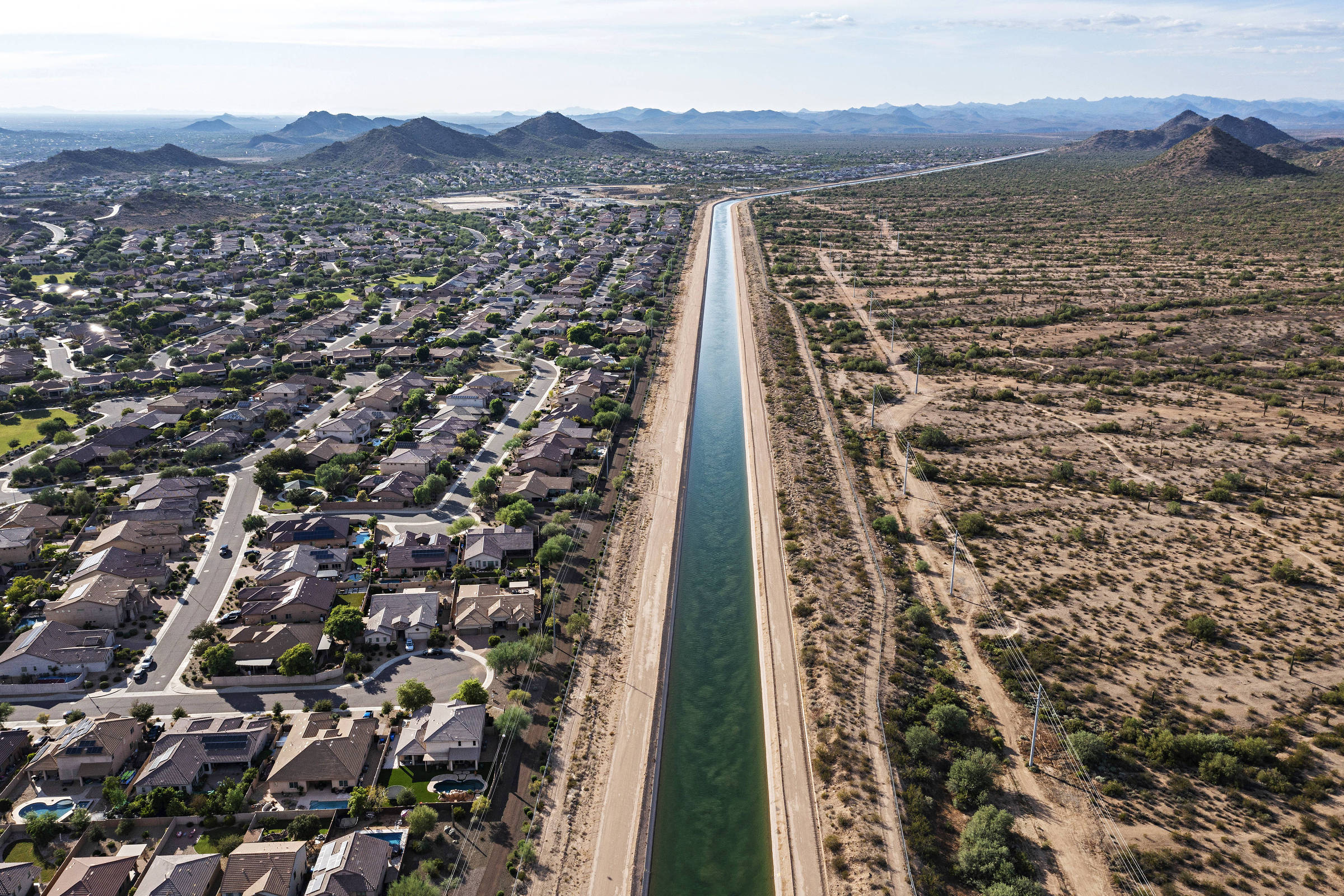
The Central Arizona Project canal, which captures water from the Colorado River and distributes it to cities across the state, runs alongside suburban Phoenix Lalo de Almeida/Folhapress
Our first stop in Arizona is the most iconic example of this phenomenon. Phoenix, the state capital, overtook Philadelphia last year to become the fifth-largest city in the US —and the fastest growing in the country. The population went from 1.4 million inhabitants in 2010, to 1.6 million in 2020, an increase of 11.2%.
There, homes have given way to taller and taller buildings, raising fears about how to provide water for the entire population amid increasingly lethal drought seasons. As of September this year, 113 people had died from reasons related to high temperatures in Maricopa County, where Phoenix is located, more than double the 55 recorded in the same period in 2020.
It was nearly 36°C in early October, during autumn in the northern hemisphere, when we found Rick Caywood in Casa Grande, rural Arizona. Seventy-five kilometers from Phoenix, the region is a leader in the production of cotton, barley and cattle in the state, but the Caywood family farm was only able to produce alfalfa this year.
In suspenders, a cap, and the scent of peppermint, always on hand to relieve a persistent cough, Rick took us to the lands worked by his son, Travis, and his ex-wife, Nancy.
He explains that alfalfa is more heat resistant than cotton, for example, and has a stable price —making the legume the safest bet in difficult times.
"Drought has been a problem for decades in Arizona, but it's gotten worse. People here are using wells, and they're going down, and so are the water tables," says Rick.
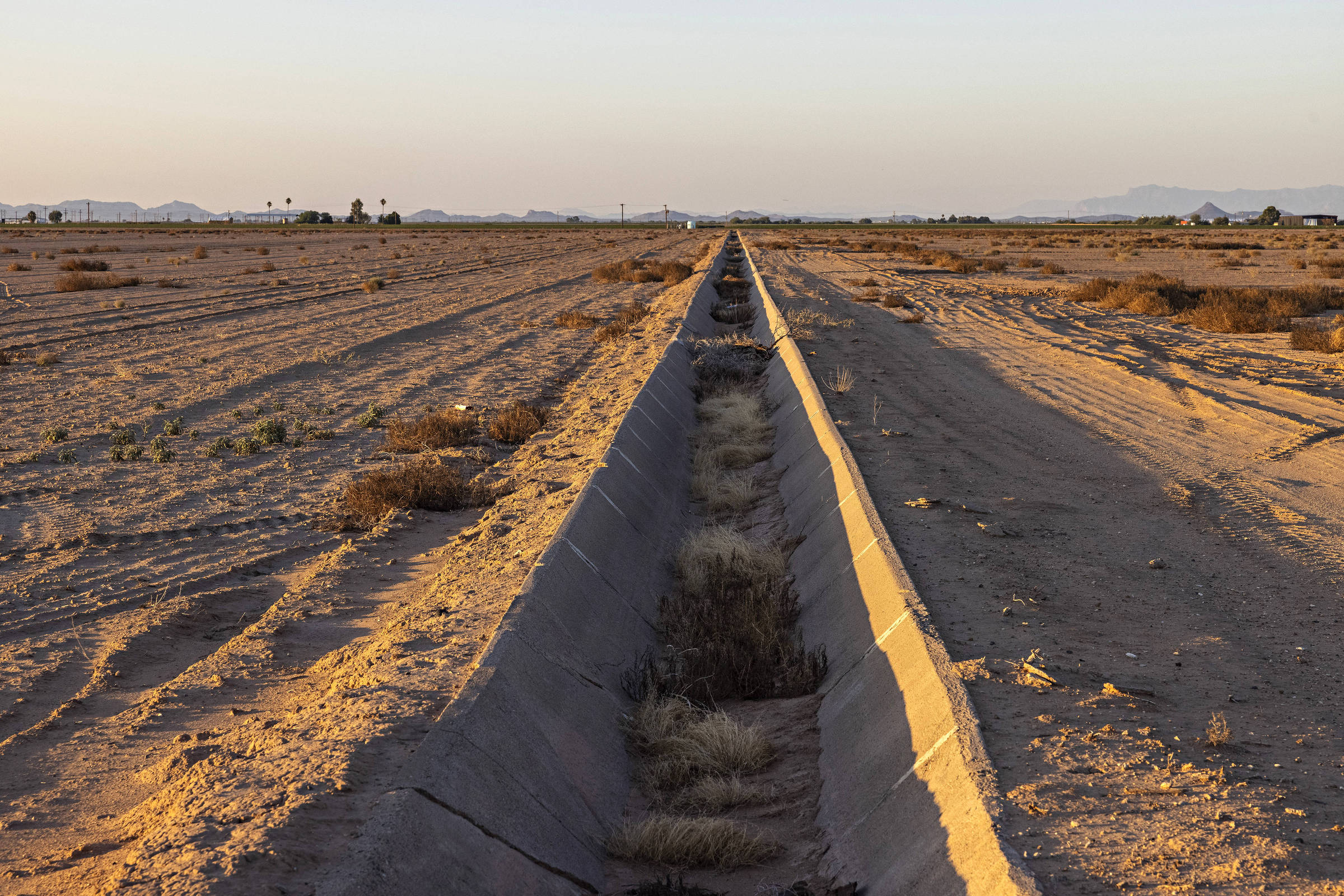
Abandoned irrigation canal in rural Casa Grande outside Phoenix Lalo de Almeida/Folhapress
The main source of water in the American West is the Colorado River, which supplies Arizona, Nevada, California, New Mexico, Utah, Wyoming and Colorado. Severe droughts in recent years, however, have brought the river to levels never seen before and have led to a shortage of Lake Mead, the largest water reservoir in the US, on the border between Arizona and Nevada.
In August this year, given the emergency situation, the US government declared a shortage of water in the Colorado River —an unprecedented announcement— and predicted a reduction in the supply of several states from the beginning of 2022.
The cuts, which can be expanded, were added to a contingency plan, already in place since 2019, by the seven states that share the river.
At first, the order was that cities and indigenous tribes were spared, causing rationing to hit rural areas in full.
"Cities are killing us because they are now a priority for supply," says Rick. "My question is what are they going to do when the farms dry up. [...] These people need to eat and get dressed, and for that we need to plant crops."
Nancy, Rick's ex-wife, walked restlessly to show the crunching noise as she stepped on dry leaves on her property. From a distance, she explains, the field appears green, but a closer look shows the real situation. "Among the plants that are left, there is only dry foliage. My harvest will drop a lot, we have lost half of the crop," says the farmer. "Last year, we had a little water at this time [September and October], now we don't. I believe that next year will be even worse."
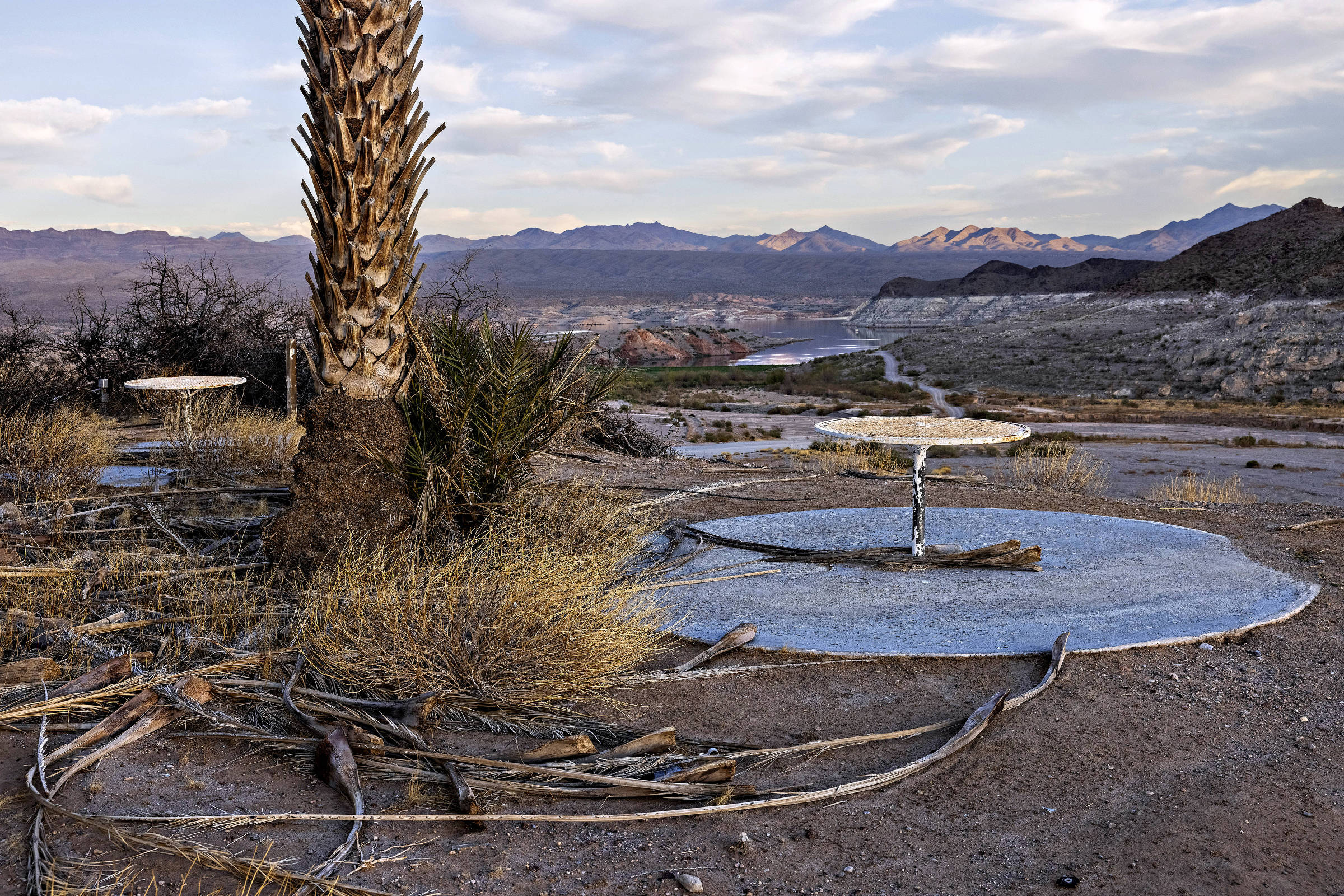
Abandoned hotel on Lake Mead, Nevada Lalo de Almeida/Folhapress
The US desert is historically dry, but the effects of climate change have made matters worse: 2020 was the driest year in Nevada and the second driest in Arizona since 1894, and the federal agency that controls irrigation canals in Casa Grande warned farmers in April that there would not be enough water for their crops this year.
In the US for four decades, Mexican Julio Vazquez, 71, has always worked growing cotton in Arizona. His life, he says, was better years ago, even when he still didn't have the documents authorizing him to live and work in the US. "It had more crops, meaning more work. Now the amount of water has dropped, and people are leaving."
The land where Julio lives and works belongs to American Jack Henness, who parked his pickup next to the reporters to find out what we were talking about with the employee. He sighed wearily as we explained the topic of conversation.
"The government could help farmers in these more critical phases, with a subsidy or something like that. But it's difficult, because there are other problems. Here we are experiencing drought, but on the other side of the country, there are floods, hurricanes and, further ahead, the [California forest] fires."
At 63, Jack celebrates, albeit melancholically, having sold much of his family's Arizona land. He regrets, on the other hand, that younger farmers, in his view, are the most harmed, when they leave the business sooner than they would have liked to. "The climate crisis is dramatically changing people's lives."
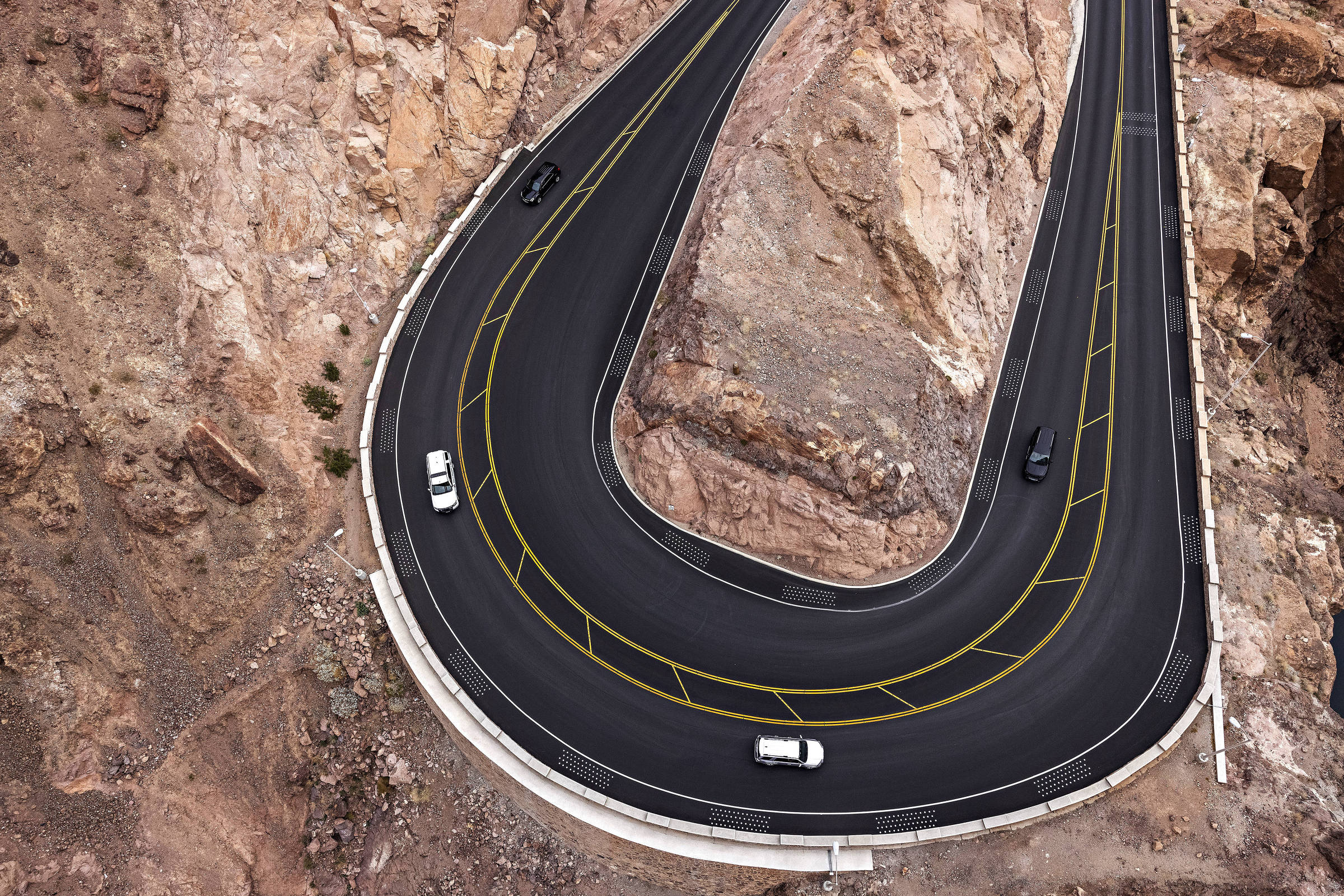
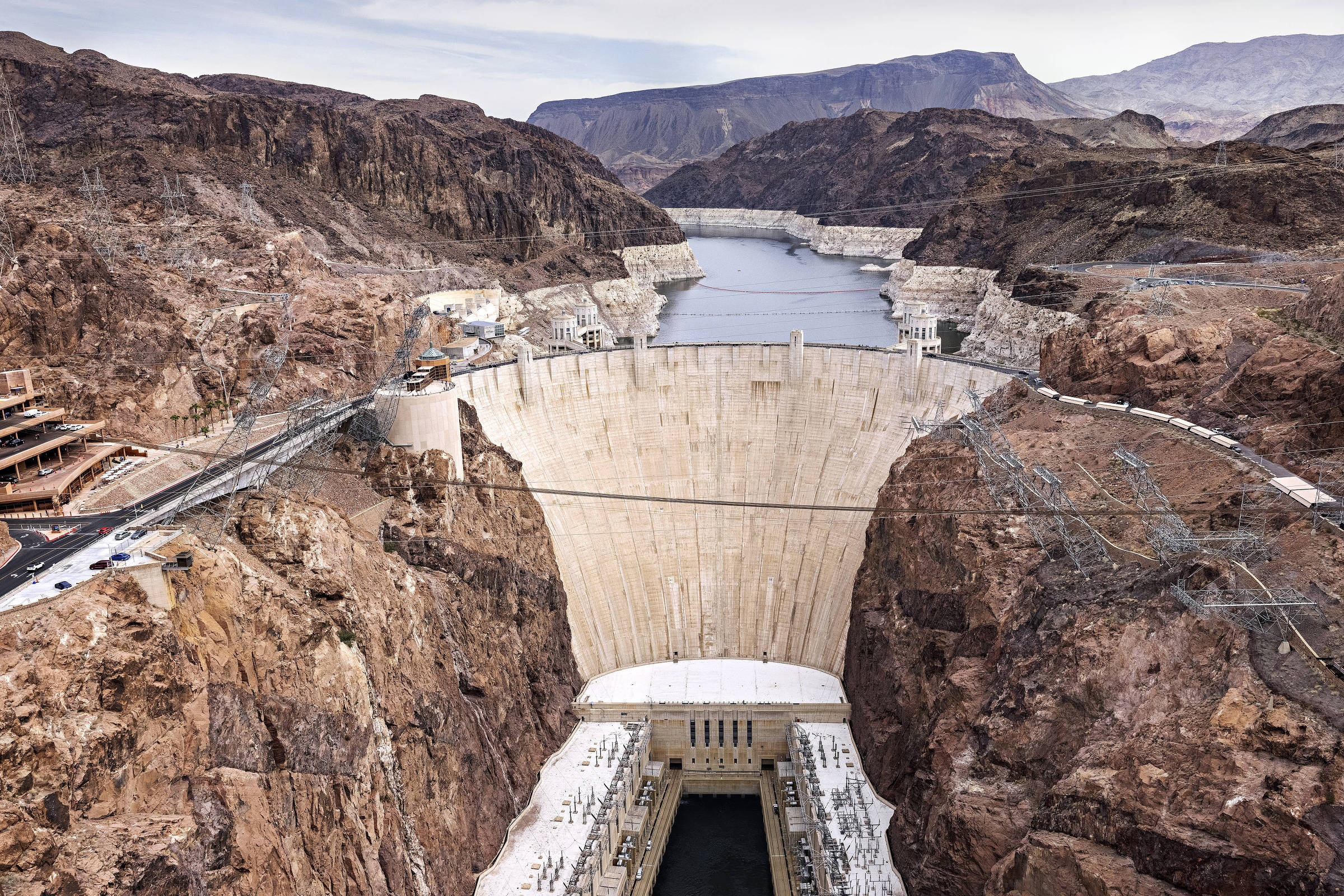
At the top, cars drive along the road that leads to the Hoover Dam, above, between Nevada and Arizona Lalo de Almeida/Folhapress
Thus, visiting the main source of water in the American West has become a must. On October 4th, we reached Lake Mead, a reservoir created in the 1930s and which this year reached the lowest level in its history.
Its dam, the famous Hoover, was the setting for films such as "Superman" (1978) and "Into the Wild" (2005), among others, and today it remains a tourist attraction.
Seeing that gigantic structure, wedged in the desert, is shocking. A lighter patch divides the mountains around the lake as a reminder that the water level was once much higher-the peak is from 1983, marked about 370 meters above sea level. In August 2021, the level was 35% of the total reservoir capacity.
Despite this, the recreational areas surrounding the dam still function as a spa for people who, unlike Arizona farmers, say they don"t noticel the climate crisis much, since they live in cities —for now spared from rationing.
Jessica Owens, 41, was one of those who risked a dive despite signs warning of the absence of lifeguards. For her, the level of Lake Mead is no longer the same and the climate chaos is real, but as she has never experienced water cuts, the crisis is barely visible in her everyday life.
Jessica lives in Las Vegas, which draws from Lake Mead 90% of the water consumed by its 650,000 inhabitants and more than 40 million annual tourists who travel to the city in search of resorts and casinos, located between replicas of the Eiffel Tower and the Statue of Liberty.
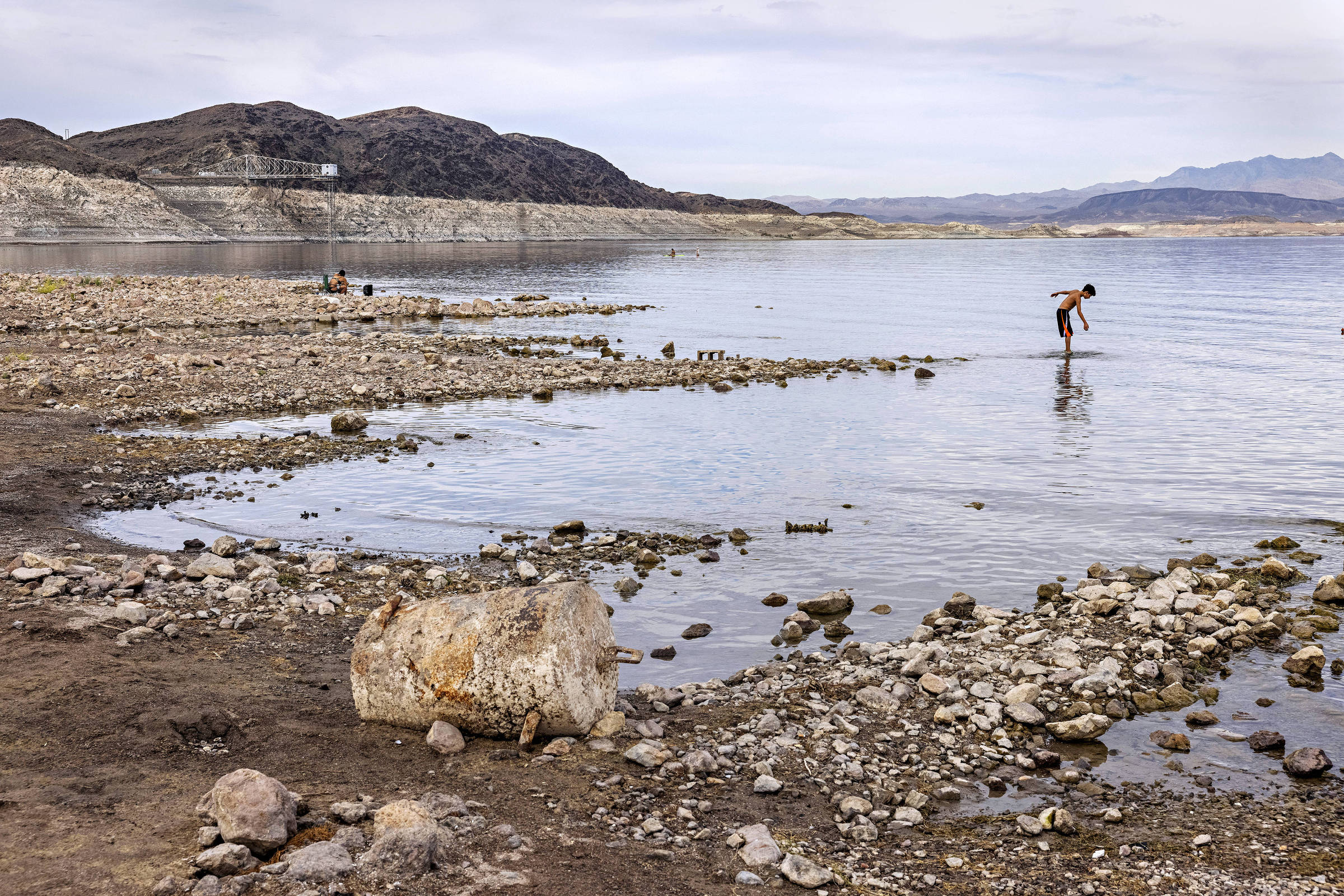
Child plays in Lake Mead, the largest artificial reservoir in the US; in the background, the old water level mark Lalo de Almeida/Folhapress
Inside the resorts, some with 6,000 rooms, smoking is allowed where the tables for card games and slot machines are located, without doors or windows, in an attempt to create a lively night atmosphere at any time of day.
The culture of consumption and waste —the driving force of many Americans' lifestyles— is reflected in scenes that repeat themselves at every step on the Strip, the city's most touristy avenue.
At night, people loaded down with bags wait hours for dinner at Bacchanal Buffet, a 600-seat all-you-can-eat scheme for $74.99. By day, they try to calm the heat with drinks in gigantic pools, some with artificial waves.
Las Vegas is the fastest warming city in the US, with summer temperatures exceeding 45°C. And, like Phoenix, it is growing at a fast pace and trying to find ways not to collapse in the face of a combination of climate crisis and high demands.
If there is no global action to cut greenhouse gas emissions, Las Vegas can expect to experience more than three months a year with temperatures above 37°C, including 60 days above 40°C. Officials say measures are underway to mitigate the crisis, particularly in terms of water conservation and consumption of renewable energy.
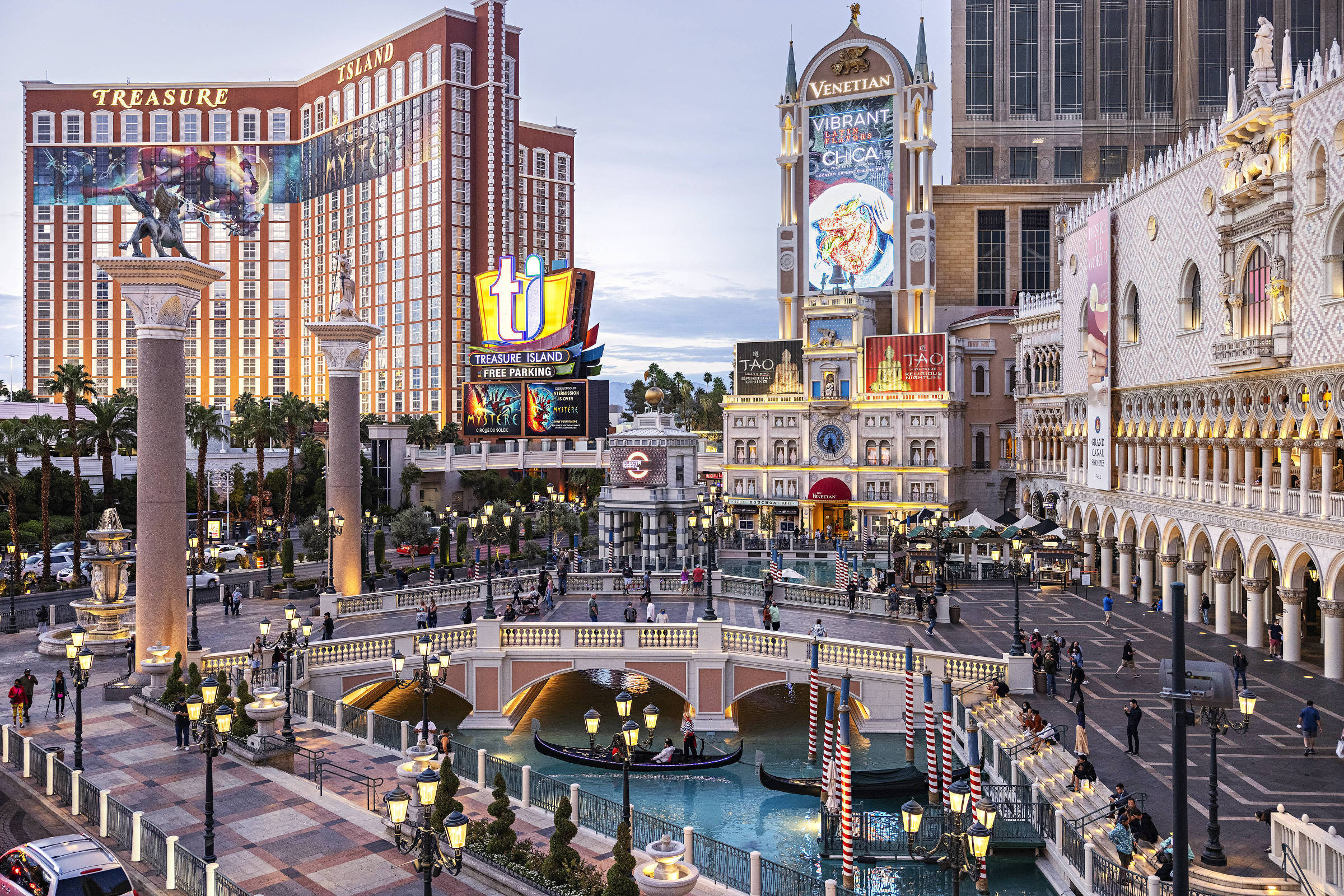
Tourists ride a gondola across an artificial lake in a hotel that mimics the Italian city of Venice in Las Vegas Lalo de Almeida/Folhapress
One example is that nearly 100% of the water used inside homes and businesses in Las Vegas is recycled back into the Colorado River, making it available again for city use.
"You can go to the Strip, turn on all the faucets, flush all the toilets, and it still won't affect the amount of water we take from the Colorado River," says Corey Enus, public information coordinator for the Las Vegas Water Agency. "We have a new infrastructure, and it"s the most efficient in the US. We lose 8% to 12% of the water in the treatment process, eight times less than the average for the country." The problem, ponders Corey, is that reused water represents only 40% of the city's consumption. The other 60% is used outside homes, hotels and commerce, with no chance for reuse.
The inglorious mission of trying to control the use of outdoor water in the middle of the desert belongs to 47 employees of the Las Vegas Valley Water District. One of them is Perry Kaye, 61, who has been a wastewater investigator in the city for 16 years.
From 3:30 am to 2:00 pm, he walks through the streets to find, warn and fine those who are using water inappropriately. That Oct. 6, while making one of his rounds, Perry showed us the most recurrent violation: a house had two automatic sprinklers spouting water over the garden, on a day or at a time not allowed by law.
With his cell phone, he films the scene, while narrating what he sees so that there is no dispute. And he leaves a notice on the garage door. "They just got a warning because they hadn't received anything like that before. I hope they act quickly." Otherwise, the fine varies from US$80 to US$1,280 (R$440 to R$7,040), depending on the recurrence.
In Las Vegas, it is considered waste when district-provided water is being used off-property on prohibited days or times. In summer, you cannot water lawns and plants from 11 am to 7 pm, when it is too hot and part of the liquid evaporates quickly. At other times of the year, the city is divided into zones, with specific days and times for irrigation.
"We can cut water consumption by 50% if everyone complies with the rule", says the agent, adding that the peak of violations occurs at dawn, between 3:30 am and 5:00 am. "People don't expect us to show up at any moment, because we're public servants. What a lot of people do is try to hide the waste overnight. They think they're being sneaky, but we're there with our flashlights."
Perry says he investigates 20 to 30 cases a day and bets on the educational character of his work. According to him, punishments have fallen —the daily peak was 63 violations. "Very rarely do I get a middle finger. It comes from people who don't follow any rules, who say I can't tell them what to do."
Las Vegas has intensified its war on grass since 2002, when it launched a program to encourage residents to remove grass from their gardens in exchange for cash. The measure worked for a while, but with the drop in demand, new public actions were needed in the face of the increasingly intense drought.
In June, a law was passed so that all decorative grass (from flower beds, entrances to condominiums and commercial areas) is removed by the end of 2026 —that is, 31% of the city's grass, which can generate annual savings of billions of liters of water.
It might be too late. The climate crisis continues to generate novelties, and mandatory cuts in the water supply are already foreseen in the American West in the near future. In the worst case scenario, the effects are likely to reach beyond rural areas and put pressure on big cities, testing a system on which 40 million people depend —many of whom are skeptical that an existential threat has already reached their backyards.
Translated by Kiratiana Freelon

Tourists watch the presentation with fountains at the Bellagio hotel in Las Vegas Lalo de Almeida/Folhapress

